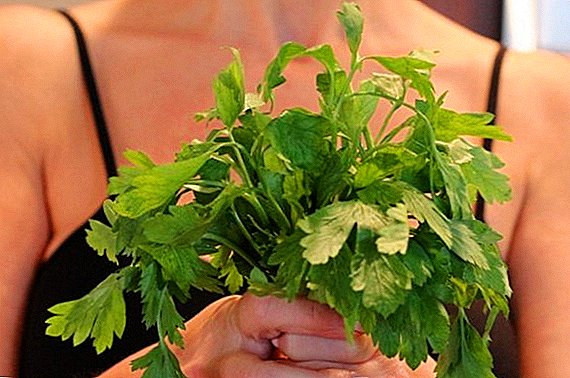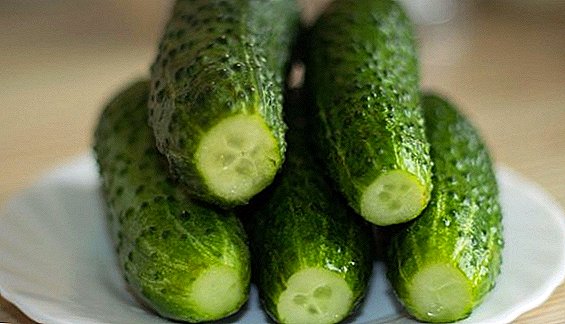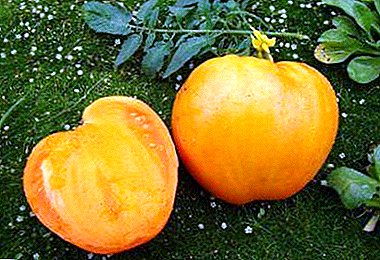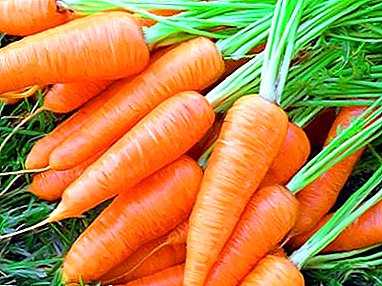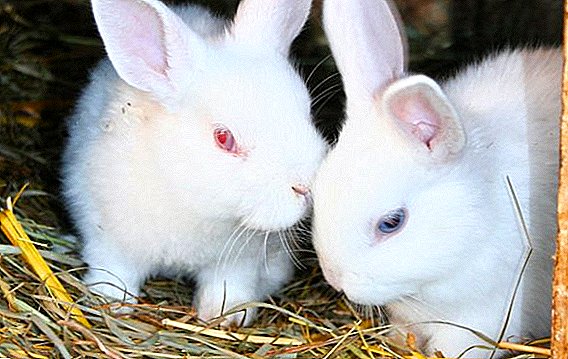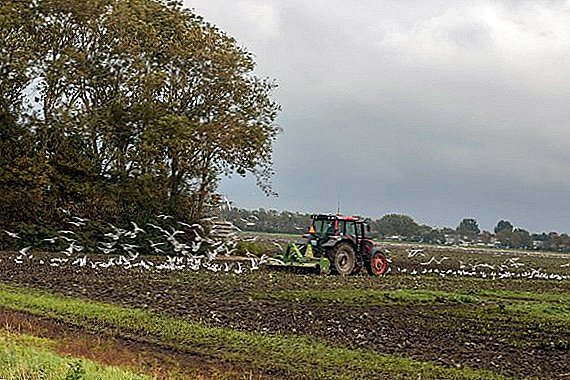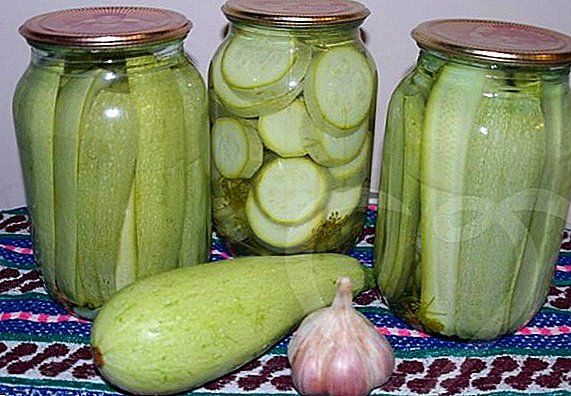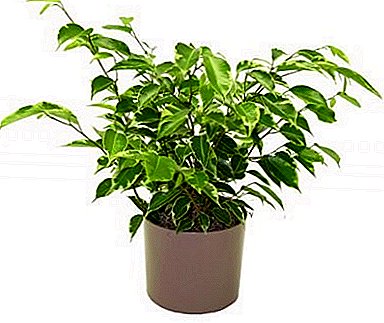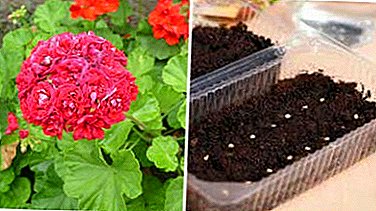 Feijoa - healthy fruit with a unique taste. In this article we will tell you what conditions need to be created in order to get the harvest of these fruits. You will understand that, despite the exoticness of this plant, growing feijoa in the home does not require much effort.
Feijoa - healthy fruit with a unique taste. In this article we will tell you what conditions need to be created in order to get the harvest of these fruits. You will understand that, despite the exoticness of this plant, growing feijoa in the home does not require much effort.
Botanical description
Feijoa - a shrub or tree of the family of myrtle 3-4 meters in height. This plant is originally from the highlands of South America. Feijoa grows in subtropical areas on all continents.  The flowers are self-pollinated by insects or crosswise in bisexual varieties. Fruiting begins in the third - fourth year. Fruits - large berries with a diameter up to 5 cm. The weight of a fruit can reach 100-120 g.
The flowers are self-pollinated by insects or crosswise in bisexual varieties. Fruiting begins in the third - fourth year. Fruits - large berries with a diameter up to 5 cm. The weight of a fruit can reach 100-120 g.
Conditions for growing a tropical plant
Growing feijoa at home is as easy as a lemon or pomegranate. But still for good growth of this exotic plant there are special requirements.
Lighting
For the growth of this tropical plant requires good lighting. It is necessary to place pots with seedlings on the windows from the southeast side.  In order to prevent the discharge of leaves in the autumn-winter period, a fluorescent lamp must be installed next to the plant.
In order to prevent the discharge of leaves in the autumn-winter period, a fluorescent lamp must be installed next to the plant.
Did you know? Fruits of plants grown on the seashore contain more iodine (35 mg per 100 g dry weight of fruits), and iodine contains 8–9 mg per 100 g in fruits of plants grown 40–100 km from the sea.
Air humidity and temperature
Feijoa is resistant to cold and can withstand a temperature drop to -5 ° C. In winter, the plant must be kept in a room with good lighting. Optimal temperature 9-12 ° C.  It is necessary to maintain humidity in the room 80-85%. If the air is dry, it is necessary to spray in the evening. In winter, regular air humidification is also required.
It is necessary to maintain humidity in the room 80-85%. If the air is dry, it is necessary to spray in the evening. In winter, regular air humidification is also required.
Soil type
Feijoa grows anywhere, as the tree is undemanding to the soil. It grows well even on sandy and stony soils.
For cultivation at home is best suited mixture of river sand, leaf humus and sod land in proportions 2:2:1. Sometimes add peat and leaf humus.
Important! Feijoa, growing at home, do not bear fruit unless they are self-pollinating varieties. Common self-pollinating varieties: "Crimean Early", "Nikita Aromatic", "Kulingzh".
Feijoa care
Care does not require significant effort. At the end of winter, before active growth, it is necessary to prune the branches until 40 %. In the spring will begin a strong growth of young shoots.  It is important to properly form the crown. Young seedling tall 25-30 cm pruned to 1/3 to form the main shoots. Next winter, each branch must be trimmed to 50-60 %.
It is important to properly form the crown. Young seedling tall 25-30 cm pruned to 1/3 to form the main shoots. Next winter, each branch must be trimmed to 50-60 %.
Exotic plants also include: Forster's hovey, a tulip tree, luffa, pandanus, alocasia, guava, strelitzia.Similarly, it is necessary to do in a year with branches of the second order. Subsequently, all strongly growing shoots are trimmed. If young shoots start to grow at the root collar, they should be removed. In the future, dried and weak branches are removed.
Watering
Feijoa loves moisture. In the summer requires abundant and frequent watering. If the soil is dry, the plant can shed its leaves. After watering, the water should flow into the drain pan from the drain. It is not necessary to drain water from the pan, it will be absorbed into the ground. In winter, should be moderate watering.
Did you know? Feijoa was named after Joan de Silva Feijó, director of the Brazilian Museum of Natural History.
Top dressing
The soil in tanks in which feijoa grows must be enriched with nitrogen, phosphorus and potassium. As a source of phosphorus, it is better to use superphosphate (1 teaspoon per 2 liters of water).  For enrichment with potassium prepare a solution of ash from deciduous trees. The application of top dressing is done in a moist soil. During the growth and flowering period, fertilizers are applied every 2-3 weeks.
For enrichment with potassium prepare a solution of ash from deciduous trees. The application of top dressing is done in a moist soil. During the growth and flowering period, fertilizers are applied every 2-3 weeks.
When and how to transplant
An annual transplant is required in the first 2-3 years. To do this, use a mixture of sand and peat (1: 2). In the future, transplantation and soil renewal are done every 3 years.
To do this, prepare the soil from sand, sod land and humus in equal proportions. Completely remove the land is not necessary, you can restrict transshipment. In young plants, the branches are very delicate, so you must act very carefully when transplanting. At each transplant, the pot size should be 7-10 cm larger. It is better to use wooden tubs and clay pots. Metal containers can oxidize, therefore not suitable for growing feijoa.
Important! A prerequisite for successful rooting - the creation of a moist environment and the correct temperature. Regular spraying and keeping under a can or cellophane is necessary.
Diseases and pests
Red spider mite infects young shoots. This happens less frequently with sufficient moisture and abundant watering. A single treatment with a solution of "Keltana" (2 g diluted in 1 liter of water) is enough to completely destroy the tick.  In case of defeat with a brown pelletizer, it is necessary to spray the plant with an emulsion of "Karbofos" (5-6 g of the drug is diluted in a liter of water). The treatment is repeated 2-3 times with a break of 7 days.
In case of defeat with a brown pelletizer, it is necessary to spray the plant with an emulsion of "Karbofos" (5-6 g of the drug is diluted in a liter of water). The treatment is repeated 2-3 times with a break of 7 days.
Breeding rules
Seed propagation is the simplest. Seeds removed from the ripened fruit, washed, dried. Then germinated in shallow containers, placing them in the ground at 0.5 cm. The earth is moistened with a spray.
Within 3-4 weeks they sprout. When the first few pairs of leaves appear, seedlings are planted in separate pots (feijoa seedlings ready for transplanting in the photo below). When propagating by cuttings, the properties of the mother plant are preserved better. Shoots cut into cuttings of 8-10 cm, it is necessary to leave the top pair of leaves. Bury the cuttings 2/3 into the ground and cover with a glass jar. Periodically it is necessary to air the young shoots.
As well as feijoa, cuttings multiply: plum, grapes, mountain ash, yoshta, honeysuckle, sea buckthorn, gooseberry.For rooting using a mixture of river sand and leaf humus (1: 1). Rooting takes 2 months. For rooted cuttings suitable soil of the same composition as seedlings.
Is it possible to grow feijoa in the open field
Plants grown at home for the warm season can be planted in the garden. It is necessary to land in February-March.
It should cover shoots with a film or make a greenhouse. Feijoa can be grown from cuttings or seeds in a greenhouse in the same way as described above.
With proper care and abundant watering in a few years you will please yourself and your loved ones with a harvest of tasty, fragrant and healthy fruits.


